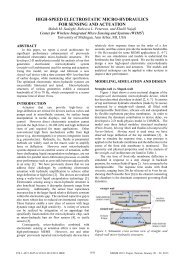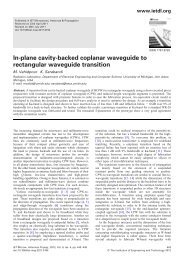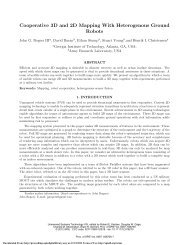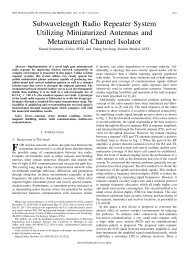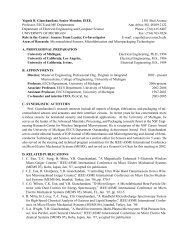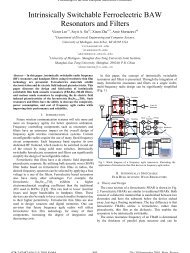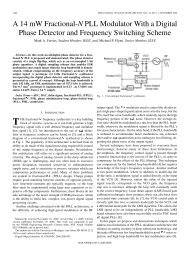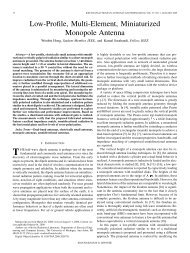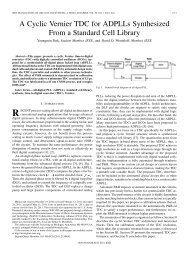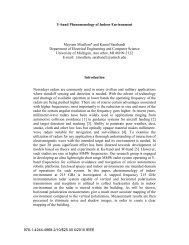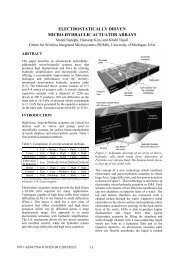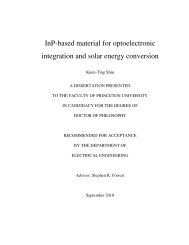[Sample B: Approval/Signature Sheet]
[Sample B: Approval/Signature Sheet]
[Sample B: Approval/Signature Sheet]
Create successful ePaper yourself
Turn your PDF publications into a flip-book with our unique Google optimized e-Paper software.
List of Figures<br />
Figure 1.1: Schematic illustration of the four consecutive steps in the generation of<br />
photocurrent from incident light to an organic solar cell [8].............................................. 2<br />
Figure 1.2: Schematic illustration of two organic solar cell architectures: (a) planar and<br />
(b) bulk heterojunction ........................................................................................................ 4<br />
Figure 1.3: (a) the structure of a CuPc/PTCBI bilayer solar cell;(b) the current density<br />
(J)-Voltage (V) is measured in the dark and under 1 sun illumination [23]. ...................... 9<br />
Figure 1.4: Equivalent circuit of a photovoltaic cell [24]................................................. 10<br />
Figure 1.5: (a) increasing series and (b) reducing parallel resistance. In each case the<br />
effect of the resistances is to reduce the area of the maximum power rectangle compared<br />
to J sc × V oc [25].................................................................................................................. 12<br />
Figure 1.6: Efficiency improvement over years for solution processed small molecule<br />
bulk HJ solar cells ............................................................................................................. 15<br />
Figure 1.7: Chemical structure of merocyanine dye used in fabricating<br />
Al/merocyanine/Ag organic solar cells [43]..................................................................... 17<br />
Figure 1.8: New squaraine donors 1 (R=2-ethylhexyl) and 2 (R=n-dodecyl); schematic<br />
diagram of squaraine:PCBM bulk solar cells [39]............................................................ 18<br />
Figure 1.9: Two new squaraine dyes substituted at the pyrrolic rings with n-hexyl<br />
(squaraine 1) or n-hexenyl (squaraine 2) chains. The presence of the terminal double<br />
bond results in a much more compact solid-state structure, dramatically affecting charge<br />
transport in the thin films [5]. ........................................................................................... 18<br />
ix


![[Sample B: Approval/Signature Sheet]](https://img.yumpu.com/34084789/10/500x640/sample-b-approval-signature-sheet.jpg)
